Review: Chevrolet Malibu 2LT 2.4
Context is everything. Because TTAC has never tried to operate as another entry in the press-car sweepstakes, our context for the industry tends to be based more on news from the business end of things than on a regular sampling of the latest vehicles to hit the market. This basic truth about our perspective goes a long way towards explaining our obsession with the travails of the domestic car industry, and the resulting accusations that we are institutionally biased against Detroit. If we do harbor such biases (and our commitment to the truth won’t let us pretend that true objectivity exists anywhere), it is because we are products of the steady flow of bad news that has bled out of Detroit for the past decades. But this is no excuse: we owe it to you, our readers, to be ever mindful of our own shortcomings. With this in mind, I set out on a quiet weekday afternoon in search of more real-world context about the automaker we are most often accused of harboring bias against.
To be perfectly honest, I actually set out to drive a Buick LaCrosse in order to get a little more context for my forthcoming road test of the Buick Regal. After an unsuccessful five minutes at my nearest Buick dealer, the worst prejudices of my TTAC-bred GM worldview
were only confirmed. Mired in dealer arbitration, this Buick showroom was a ghost town populated only by one LaCrosse, one Pontiac Solstice, one friendly receptionist and one profoundly depressed and antagonistic “salesman.” Caught between “Old GM” and oblivion (thanks to ongoing dealer cull arbitration), it was impossible to begrudge the dealer a little depression or blame GM itself for my unsavory experience with him. Still, as anyone’s mother will tell you, courtesy costs nothing, and you catch more flies with honey than vinegar.
After the rudeness and crushing sense of defeat and uncertainty at the Buick dealer, and not immediately knowing the location of the next nearest un-culled (or not) Tri-Shield peddler, I made tracks for a centrally-located Chevy dealership. Posing as a potential Malibu customer, I was quickly introduced to a friendly, personable salesman who ushered me to a waiting 2LT-trimmed ‘bu.
Because of TTAC’s belief in the importance of sampling vehicles as they’re available on dealer lots, I’ve lied to more car salesmen than I care to think about in order to get time behind the wheel. Suffice it to say that this was the first time I’ve ever felt bad about the subterfuge. This guy was that good. As unscientific as the sample size was, these two visits proved in dramatic fashion that GM is neither “good” nor “bad,” but a company of contrasts: in terms of dealer experience anyway, true excellence exists just down the road from abject misery.
And so it is with GM’s cars. The handsome Malibu I drove was nestled between those two icons of “old GM,” the Cobalt and Impala, and the contrast could hardly have been more dramatic: the Malibu’s clean, graceful lines made it look like the single name-brand interloper on a shelf filled with off-brand crap. If, as some industry types like to suggest, the car business is no different than the fashion business, the Malibu would be GM’s best-selling car hands-down. In reality though, it’s been consistently outsold by the Impala, and those styling-über-alles insiders are superficial fools. So much for looks then.
Settled inside the Malibu, the favorable impressions continue. Having been previously turned off the ‘bu’s interior by the garish top-spec LTZ trim’s two-tone interior, the 2LT was a refreshing, if somewhat more somber reintroduction. Acres of softish black plastic isn’t everyone’s cup of 10W-30, but it conceals the occasionally awkward intersections of dash/console panels and uninspiring material texture pattern far better than the lighter-colored interior options. As a result, the design comes across as less busy, and the overall impression of quality is much improved.
The 2LT’s power-adjustable, heated driver’s seat is a comfortable place to spend time, with only a slight feeling of shoulder-up claustrophobia compared to the more generous real estate offered by competitors. Ergonomics are similarly up-to-snuff, offering far more intuitive controls than the button-jammed IPs of other latter-day Chevy offerings. Despite getting a leather-wrapped steering wheel with the 2LT trim level, the steering wheel is the only real disappointment lurking in the Malibu’s front row. Tiller-mounted audio and cruise control switches are densely clustered and take time to learn, and the wheel itself felt small, slightly loose and generally
detracted from the overall quality impression.
Similarly, the rear seats seem like almost an afterthought compared to the well-appointed front row. Low seat height, a relatively narrow bench,and unsupportive seating make for a poor combination, and the contrast here with the Impala is unmistakable. Sure, the suede-alike seat inserts look and feel nice, but the impression of quality doesn’t approach the level of the preconception-banishing cockpit. Here’s hoping that GM’s success in the rear-seat-obsessed Chinese market eventually leads to improvements in the US-market Malibu. A D-Segment sedan should be designed to satisfy and impress more than just the driver and front passenger.
This is doubly true, given how refined the Malibu’s ride is. The interior is quiet and rattle-free, and the suspension wafts with well-damped grace, unsettled only by direct pothole strikes and some tire rumble on poor surfaces. Though tuned for comfort, the ‘bu’s suspension feels well-poised, and and keeps the driver feeling in control at all times. Perhaps too in-control: the super-light electric power steering feels effortless in the parking lot, but almost silly-overboosted at speed. Feedback may be AWOL, but at least there’s no attempt to hide the fact with confusing, artificial wheel feedback. This test didn’t provide an o
pportunity to tackle much in the way of curves, but nothing indicates that a perception-altering experience was missed.
On the other hand, GM’s 2.4 liter four-cylinder engine did impress greatly. Thanks to a low first gear, the four-pot Malibu covers up a weak-ish tip-in, and quickly reaches peak torque. By the time it reaches 160 lb-ft at 4500 RPMs, the engine provides surprisingly generous shove, accompanied by a muted, grinding growl reminiscent of gas direct injection engines. Performance would best be called adequate, but refinement lives up to the Malibu’s overall impression of quality.
The autobox’s six speeds make up for a lack of rev-happiness, and encourages a fuel-efficient driving style defined by brisk acceleration and easy light-throttle coasting. The major downside here is that the drivetrain tries to be too efficient for its own good: approaching a yellowing light while cruising at light throttle, the right foot didn’t find the torque needed to effortlessly power through until it was on the floor and the transmission got the hint. This would have been more disconcerting if the Malibu’s brakes weren’t strong, consistent and confidence-inspiring.
For around $27,000 including an uprated, USB port-equipped stereo, this Malibu 2LT seems like the kind of car that should be driving GM’s sales as well as its image as an automaker that can build competitive mass-market cars when it puts its mind to it. Strangely
though, the Malibu hasn’t convincingly outsold its far less competitive predecessor, let alone its double-cheeseburger-value-meal Impala cousin. This is all the more surprising considering that GM is offering $3,000 cashback on the image-busting sedan.
Context gained, it’s impossible to not be impressed by both the Malibu and my random sample of the Chevy dealer experience. Still, the bad old Buick dealer and the Malibu’s lamentable lot-mates, as well as the few niggling annoyances with the ‘bu itself were enough to give pause. GM execs have recently taken to publicly stating the goal of “making every new model a home run,” a line that inevitably draws some eye-rolling from longtime GM watchers. But the Malibu and its context really reinforce the seeming truism. It’s a truly good car, especially by the standards of past GM sedans, but it needs a context that quells any fear that this quality might be a mere fluke. Unfortunately, it appears that the already old-school Impala will still be providing context to the Malibu, even after the ‘bu’s planned 2013 redesign. Even with more refinement and development, the Malibu will still be judged in its context. Nothing can escape its context.
General Motors and TTAC’s long-standing animosity provided the psycho-drama and digressions for this review.
More by Edward Niedermeyer
Latest Car Reviews
Read moreLatest Product Reviews
Read moreRecent Comments
- SPPPP I am actually a pretty big Alfa fan ... and that is why I hate this car.
- SCE to AUX They're spending billions on this venture, so I hope so.Investing during a lull in the EV market seems like a smart move - "buy low, sell high" and all that.Key for Honda will be achieving high efficiency in its EVs, something not everybody can do.
- ChristianWimmer It might be overpriced for most, but probably not for the affluent city-dwellers who these are targeted at - we have tons of them in Munich where I live so I “get it”. I just think these look so terribly cheap and weird from a design POV.
- NotMyCircusNotMyMonkeys so many people here fellating musks fat sack, or hodling the baggies for TSLA. which are you?
- Kwik_Shift_Pro4X Canadians are able to win?



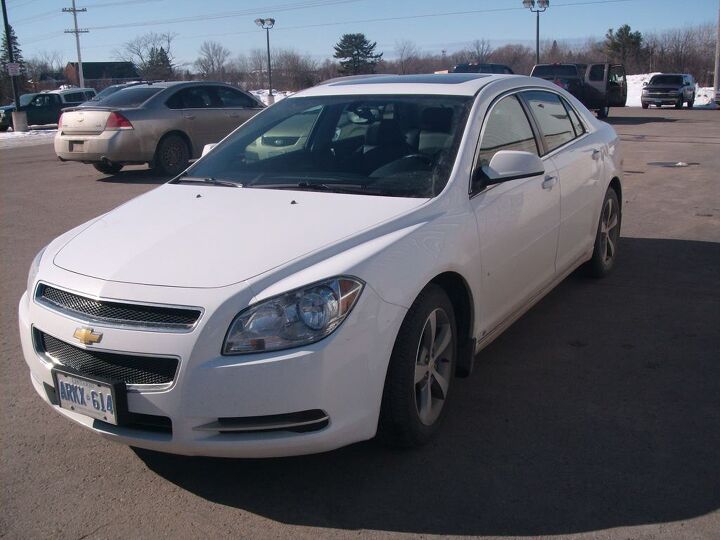




















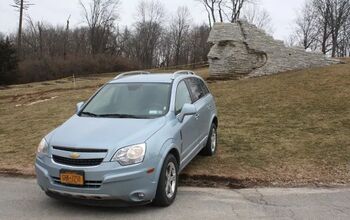
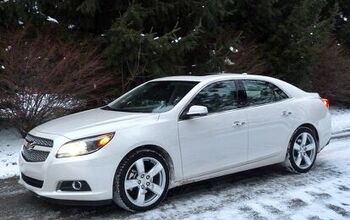
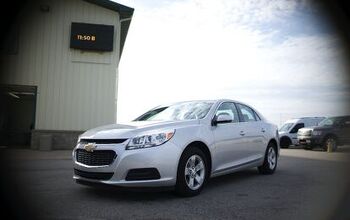
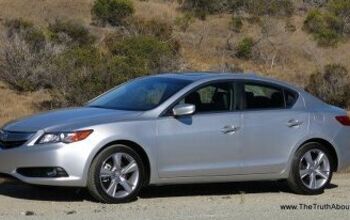











Comments
Join the conversation
I own a 2008 Impala LT with the 3900 V6. Bought it with around 24K miles from the original owner for $15995 last year when the car was but a year old. It is a basic LT model with cloth bucket seats but it has more equipment than the regular 3500 LT of the time did including fog lamps, 17" alloy wheels, upgraded sport suspension, rear spoiler, dual exhaust, flip and fold rear seat and stability control/ABS. It is one of the best cars I have owned or driven in a while. The 3900 is very responsive at all times and will pull 30 plus MPG on the open road all day long which is a pipe dream in a Malibu V6 which sacrifices fast acceleration for fuel economy. The car is very easy to live with on a daily basis and I enjoy it now as much as the day I bought it. It now has just turned 63,000 miles and has only suffered one issue- the typical GM intermediate steering shaft clunk going left. That was replaced and the Impala is back to a nice tight front end and effertless highway cruising, even at well over legal speeds. No other problems at all. No squeaks or rattles or any odd behavior to note. The GM 4 speed automatic always shift right on time with no hesitation(something no Malibu or Camry 6 speed I have driven can say) and passing power on the highway is more than enough. The front seat is noticeably roomier than the Malibu, I don't bang my head everytime I get into the car and the center console isn't two feet wide as in the new LaCrosse or Taurus which steals what room there is. I have driven many cars over the years either in ownership or rental. The Impala just seems to do everything fairly well and the size, ride/handling/mileage/reliability/price are all spot on. The poster above who stated that when Chevy keeps trying to copy the Camry and Accord it usually ends up failing while the good old traditional Chevy excels. Never has there been a truer word spoken. Chevy buyers are expecting to come into a Chevy store seeing cars like the Impala not a CamCord. If they want a CamCrod then that is what they purchase. If GM would take the hint and build and improve on what they do best cars would fly off the lots. The Impala is certainly not there best effert and could for sure use improvement. A nice smart shifting 6 speed automatic tied to a SIDI 3.6 would make a excellent LTZ drivetrain for starters. New more padded and better contoured seats and a higher quality dash would be another. Chevy also has a perfect RWD full sized sedan with traditional V8 power sitting right in there poilice fleet called Caprice for 2011. Why this car isn't available for the public is a total mystery to me as I think they would sell like hotcakes.
I don't agree with a lot of these comments ripping the Impala. I drive a 2006 Impala and I think it's a great car. It hasn't given me much trouble and I drive a lot. Right now, I'm in the market to buy another car. I've been looking at the Malibus and I really like them. I'm looking at one that is light blue (it's actually called golden pewter. Doesn't make sense but OK). Anyway, I test drove the Malibu and it's OK. I've got to say that overall, I'm not 100 percent impressed with this car and it pains me to say that. I really love the styling and the color of this car. But the interior feels too small compared to the Impala, and the radio dash looks like cheap silver plastic. Why didn't they get something that looks nicer? And the little buttons on the steering wheel are way too small. Also, I drove an LT and it's not much better than the LS. Now, I've got my eye on another Impala. So, which one should I go with? The roomier Impala or the Malibu, which is sort of the "hot" car right now but I feel like I'd be getting less car for the money. Please give me your honest opinion. Thanks.